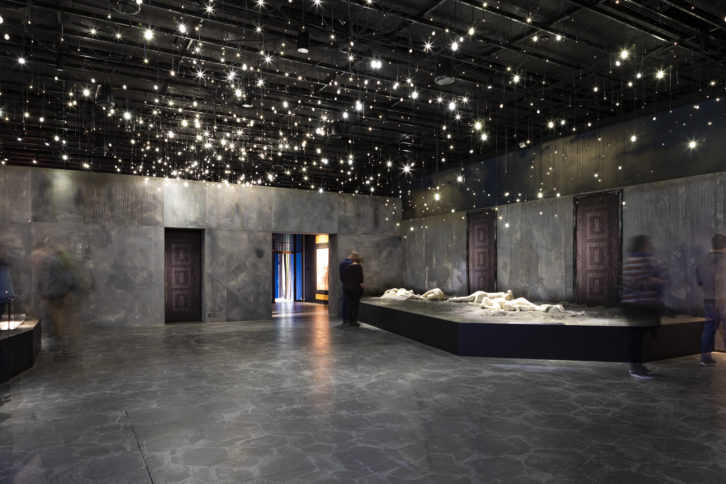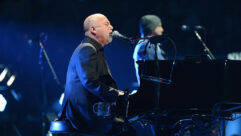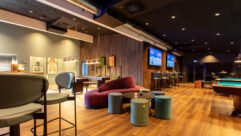Designed by multi-award-winning architects, Henning Larsen AS, Moesgaard Museum (MOMU) is one of Denmark’s leading attractions. Ingeniously designed as an integrated landscape feature, built into and rising up from the rolling hills overlooking Aarhus Bay, MOMU is a vibrant house of culture and knowledge that blends ancient artifacts with modern technology to bring the past alive.

The latest exhibition, “Bound for disaster – Pompeii and Herculaneum,” brings to life the events that unfolded around the devastating eruption of Mount Vesuvius in AD 79, killing an estimated 2,500 people. The exhibition unites over 250 objects on loan from seven different Italian museums and cultural institutions, many of which have never been shown outside Italy. Visitors are able to view carvings and gravestones bearing inscriptions that provide vivid descriptions and information concerning family relations, frescoes featuring maritime motifs, landscapes and everyday situations, military and maritime equipment and cargoes of commodities from distant destinations and the commercial harbor at Naples.
The exhibition also includes exhibits demonstrating the terrible consequences of the volcanic eruption, including casts of corpses from Pompeii and skeletons of the dead from Herculaneum. The sound design was created by composer, Søren Bendixen of Audiotect, who specializes in creating soundscapes for exhibitions. Combined with the scenography, video mapping and lighting, the soundscape immerses visitors in the pre-disaster atmosphere of the lively city of Pompeii, before leading them into the post-apocalyptic scenes that followed.

“We are using a total of 51 Genelec 4430 loudspeakers, all fed by discrete channels over a Dante network with Ubiquiti Edge switches,” explains Johan Ahrenfeldt who is responsible for exhibition technology at MOMU. “We’re using QLab software for the playback and a Dante-compatible RME Digiface interface to run a total of 54 discrete channels flawlessly. Various audio formats are used in the sound design, including Ambisonics and Quadrophonic sound, to provide a fully immersive experience.” “Many of the loudspeakers are concealed by the scenography,” he continues, “but in other places they are mounted directly on the walls. However, they blend in very well thanks to the harmonious design of the Genelec enclosures and a new feature implemented in the Smart IP Manager software which allows us to dim the brightness of the on/off LED indicator in the front.”
Ahrenfeldt is no stranger to Genelec, having used many 4000 Series and 8330A loudspeakers on previous exhibitions, but he says that the new 4430s introduce a new paradigm to the world of installed sound solutions. “I’m not talking about sound quality – the 4430s meet the same exacting standards as the rest of the Genelec range – but in terms of installation, the Smart IP concept opens up a world of possibilities. The most significant benefit is the flexibility and the functionality added by the network-based infrastructure and the use of PoE+ for powering the speakers. This means lower installation costs, easier, tidier and more flexible cabling, the possibility to add or move speakers late in the exhibition building process, and the ability to monitor and control the speakers remotely. All of these factors made a big difference to us when installing our newest exhibition.”
Ahrenfeldt recalls that “Bound for disaster” was not without its challenges in terms of audio, in particular due to the very open exhibition areas which were delineated by virtue of their sound designs. “One of the main obstacles was to minimisze the sonic overlap between the different areas. We achieved this by using many sound sources (loudspeakers) so we could benefit from their sound directivity and cover the required areas with a low SPL per speaker. Genelec’s superior sound quality with crystal clear definition and intelligibility even at very low levels makes this possible. Despite the openness of the space, the transitions between the different areas work very well.”

“Our approach is to consider the sound design as a holistic entity where the different sound designs relating to specific areas of the exhibition are edited, mixed and synchronized on site into the main sound design covering the whole exhibition,” he continues. “The danger, of course, is ending up with ‘audio soup’ but careful design and Genelec’s superior clarity and definition have helped to create a truly memorable visitor experience.” “The new 4430 fits perfectly into the market of exhibition technology due to the use of flexible infrastructure, on-board amplification, and the minimal need for cabling – but still delivering class leading sound reproduction,” notes Ahrenfeldt in conclusion. “The reduced cable requirement is often of greatest value in relation to implementing exhibition technology, particularly in old buildings which often are classified as protected cultural heritage. This isn’t the case at Moesgaard which is a new building, but it still makes life a whole lot easier! I’m delighted with this new solution from Genelec and look forward to them expanding the range in the near future.”










